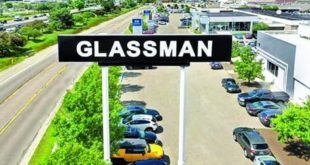
The death of George Floyd this summer while in Minneapolis police custody sparked a resurgence of civil rights demonstrations across the country. It also shined a spotlight on how large corporations and organizations foster diversity and inclusion while also examining whether they create safe and equitable work environments for all employees.
The automotive finance sector — which historically has skewed white and male — is among those contemplating its diversity and inclusion efforts. Some of the nation’s largest auto lenders said they prioritize diversity and inclusion, and in the past few years they have formulated strategies around hiring practices, community outreach and internal mentorship and business development programs.
Inclusion was the first step for Ally Financial, according to its chief diversity officer Reggie Willis. Ally maintains eight employee resource groups — Black African-American, Asian/Middle Eastern, Hispanic, Diverse Abilities, LGBTQI, a group for employees across generations, women and veterans — for internal communication and networking opportunities. About 37 percent of Ally’s 9,300 employees participate in one or more of the groups, which launched in 2017.
“The goal of our resource groups is to provide a safe place for conversation and dialogue for those employees that identify with that group, or for those employees that want to learn more and consider themselves allies of those groups,” Willis said.
“It’s definitely created a great environment and a great sales piece for us when we think about bringing in new talent.”
Each group has a chair and an executive sponsor. The sponsor sits on the lender’s broader diversity and inclusion council, which reports to the bank’s board on the company’s progress. The organizational structure gives the groups greater authority within the company, Willis said, and ensures initiatives and ideas reach the highest levels.
Ally leverages the groups in a variety of ways. Recently, a prospective employee who was relocating to the Detroit area for a role with the company wanted to know what resources were available for their child, who has autism.
“We linked them up with someone in our Diverse Abilities ERG who had a child on the autism spectrum that was in the Detroit school system,” Willis said.
Mentorship circles and one-to-one programs are among GM Financial’s most successful internal programs for career development for employees with dissimilar backgrounds, said Shunda Robinson, global vice president, diversity and inclusion.
Mentor/mentee pairs are selected by Robinson’s team and ideally forge a yearlong partnership between two employees at least two tiers apart in the lender’s organizational hierarchy. It also helps if employees connect across departments, she said.
Because of the programs, some employees have received job offers across the company, and it has increased the number of promotion and advancement opportunities for people of color.
“Most positions in those higher levels are built basically on who you know and who knows you,” Robinson said. “The reality is, if you look at our leaders, a lot of them, the only diversity they come in contact with is when they come to the workplace.”
In 2015, GM Financial’s program began with 65 mentees. In 2019, that number grew to 358. Of those participants, 70 mentees received promotions; just over half were women and more than 40 percent were people of color. About 700 employees participate in the program globally, with slightly more than 500 mentees and about 320 mentors.
Much of the program’s inspiration came from Robinson’s own experience.
“It was really leading more from a place of what was in my heart, and really thinking from a perspective of an African American female,” she said. “In some of the circles that I’m in, I am the only African American female — only female, only African American — in the room. What is it that a company could do or say that would speak to me?”
Robinson believes more work is needed on hiring practices, which starts with how lenders craft job applications. Asking for aspirational qualifications or skills that could be learned on the job can scare off potential candidates, she said.
“The words that you were putting on a paper really matter,” she said.
Next year, Robinson said the lender plans to initiate a “reverse mentoring” program that will pair millennial employees, which make up more than 50 percent of GM Financial’s work force, with senior-level employees.
“We get so excited about a Mary Barra, and then progress stops,” she said, referring to the GM CEO. “What I want to see is the consistency in what we’re doing … at the leadership level. For the lenders, I think that the piece that’s missing is the lack of women, the lack of professionals of color in those influential leadership positions that are present at the table when decisions are made.”
For Exeter Finance, this summer’s protests widened the company’s focus on diversity and inclusion efforts, said Charita Henderson, vice president of leadership development. A program to attract more diverse employees and foster unity is in its early stages, and the lender was in the process of establishing a women’s network before the pandemic hit.
Exeter has two resource groups, one for Black employees and another for women. An LGBTQ+ group and a LatinX group, and a mentorship program, are in the works, Henderson said, with more likely to develop. The groups are open to all employees and are run by employees with executive sponsorship. Exeter has about 1,300 employees nationwide.
“We are not going to put so much structure around it where they are being told how it’s going to work,” she said. “It’s really more about discovery and empowerment.”
Thoughtful talent sourcing is another avenue Exeter’s support networks are investigating, Henderson said, such as partnering with historically Black colleges and universities on job fairs.
JPMorgan Chase’s community outreach efforts include its Fellowship Initiative, which pairs employees with young minority men for intensive academic and career prep support. To date, more than 350 high school students have participated in the 10-year-old program, though Chaseplans to grow that figure to 1,000.
Chase Auto CEO Peter Muriungi, who has sponsored the Dallas chapter since 2017, said each graduate of the program enrolled in college. “We have the greatest opportunity to shape their future,” he said.
Another program Muriungi is involved in, Dallas Promise, offers not just mentorship and college advice, but also the funds to get them there. More than 100 Chase employees work with that program in the area, he said
“The firm has been committed to this idea of diversity and inclusion for years in terms of the big picture, the community commitment,” he said.
Internally, the bank has had employee resource groups for decades. Some newer efforts include its Advancing Black Pathways program, created in February 2019. The lender added its first global head of diversity and inclusion this April, Brian Lamb. Executive compensation is tied to diversity, said Muriungi, though he declined to specify what percentage of an executive’s salary hinges on diversity or how that progress is measured.
For Ally, increasing diversity includes community outreach through programs such as its Moguls in the Making. In partnership with the Thurgood Marshall College Fund and the Sean Anderson Foundation — established by Detroit rapper Big Sean — 50 students from historically Black colleges and universities compete annually for scholarships and internships with Ally. The second-year program drew 570 applicants nationwide in 2020.
The 50 finalists were tasked with developing and presenting business plans that offer solutions to cultural and societal challenges. First prize includes internships at the Ally Design Concept Studio, the company’s internal think tank based in Charlotte, N.C. Winners also receive $ 10,000 scholarships.
All 50 participants also were able to apply for internships with the company. Six participants from last year’s competition were hired as full-time employees, Willis said. The bank expects to extend internship offers to 20 of this year’s participants in the next few weeks.
Willis said if he were to grade Ally’s progress in diversity and inclusion, he’d give the bank a B+ with aspirations to bump that to an A.
“All of the things that transpired over the summer has definitely created a heightened level of focus and awareness for many organizations,” he said. “For us, luckily, we’ve been at this for a while. Am I satisfied? No. The good news is … there’s not a destination with this work.
“It’s part of who we are.”


